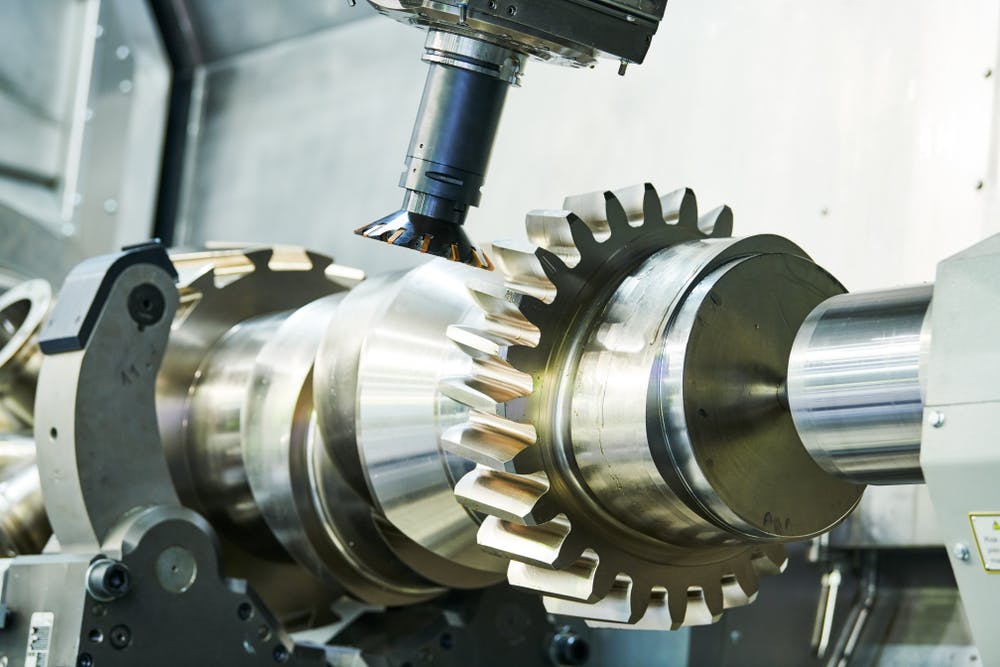The term "gear hobbing
machine" describes a tool that can cut and shape gears. The machine
gradually grinds the gear's teeth while spins the shaft quickly. It is not
uncommon for many bags to be cut simultaneously. Therefore, they are ideal for
tasks that need precision and efficiency. Reduced expenses, increased output,
and enhanced accuracy are just a few benefits of a gear milling cutter.
Implements For Broaching
Broaching, which entails removing
forms, is the most common method for making gears. When using a broach to cut
anything, this is the usual result. By progressively running a broach over each
tooth, its size is increased.
Slackening Down
If you want to make gears quickly and
efficiently, try "hobbling" them. The spiral cutting tool, also known
as a hob, is used to etch teeth onto blanks in a gear hobbing machine. This
technology works well for moderate to high output, and its speed makes it ideal
for mass manufacturing.
Cutting Gear Tools Have AWide Variety
Of Applications
The hob is among the most versatile
tools for cutting bags because of its many cutting teeth and ability to produce
various gears. The rotational speed and angle of the hob concerning the
workpiece establish the kind and quantity of teeth made by the gearbox. So,
hobbies are a great way to spend leisure time without breaking the bank.
Rolling Pins
A milling machine's form cutter is
used to shape the gear teeth. This cutter rotates axially to cut gear teeth to
exact specifications. A tooth cut by the blade allows the gear cutting tools manufacturers to move to the next
position. Once the blank is blank again, the form cutter starts missing the
next tooth, and the process continues until all teeth are ready.
The Cutting OfTemplet Gear
A single-pointed cutting tool might
be used to create a gear tooth profile. An inverted temple shaped like a gear
tooth controls the device's rotation and guides it along a set path while
making gear-cutting tools.
Manufacturing Machinery ForBevel Gear
Eight or nine bevel gears were
manufactured for each position by the uncoated tool. Nevertheless, using the
same cutting settings, the tin-coated devicecreated 24 to 26 bevel packs in each
location. There has been an increase in production of about three times this
level.
The main reason for this is that a
wear-resistant tin coating was applied. This coating prevents chemicals and
heat from penetrating. The layer doubles as a lubricant thanks to its low
coefficient of friction. The tool has a longer lifetime with this coating since
it is more heat stable than the untreated one. It further boosts productivity.
The development of novel tool
materials has been expedited due to the need for technological progress and
economic competitiveness. Many different kinds of materials have been tested to
achieve this goal.
The materials that have endured and
are still available are the best options when considering tool life, metal
removal rate, surface finish produced, ability to perform satisfactorily in
various applications, and cost of tools made from them. These materials should
have the necessary properties for devices, such as chemical stability,
toughness, wear resistance, and hot hardness.
Tools may be made from various
materials, such as diamond, HSS, ceramics, cermet, cemented carbide, and cubic
boron nitride. Regardless of these materials, HSS and cemented carbide cutters
and tools are the most challenging for gear cutting. The cutting speed is
affected by the low heat stability of both materials, slowing production.









0 Comments